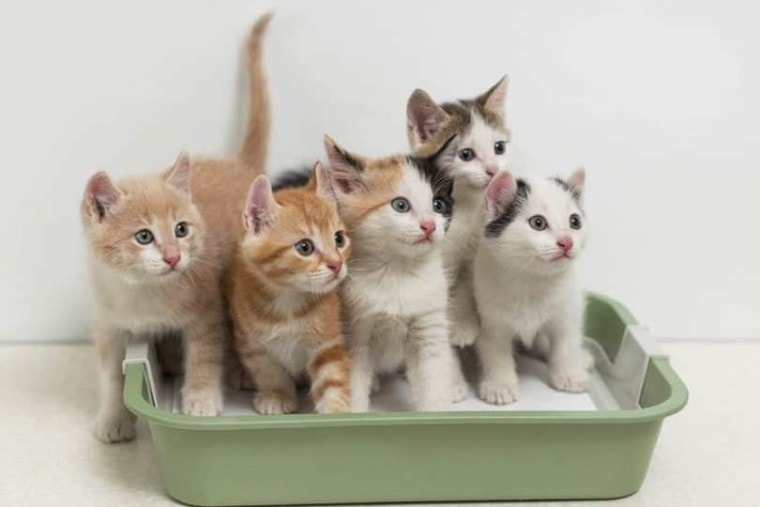
Kittens have this unique way of making your cat-loving heart melt. From taking their first steps to seeing how big they grow, watching kittens grow up is one of the most memorable experiences for cat parents. Fluffy, charming, and irresistibly adorable, here are 20 facts that will make you love kittens even more!
The 20 Facts About Kittens
1. Kittens weigh 3–4 ounces at birth
Newborn kittens are so incredibly tiny they can easily fit in the palm of your hand! At 3–4 ounces, a newborn kitten weighs around the same as a lime. Kittens at birth do very little but eat and sleep, so you should notice how quickly they grow during the first few months of life, gaining approximately 1 pound per month until they reach 6 months old. Normally, feline litters have 4 to 12 kittens, so think of a basket full of 4 to 12 limes!
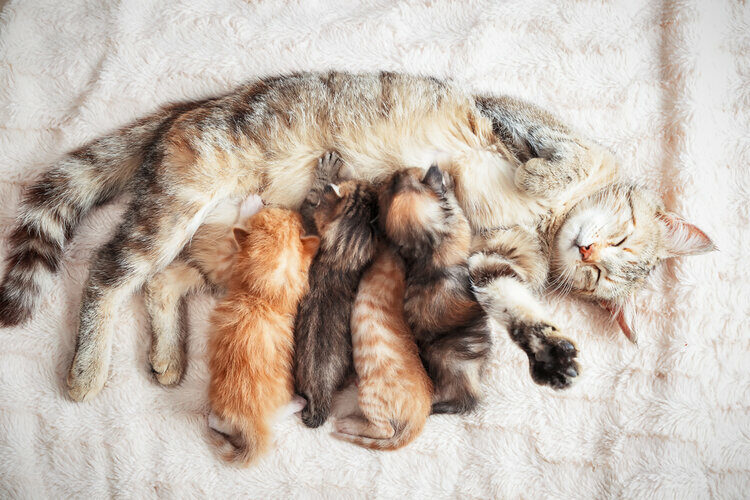
2. Kittens are incredibly fragile
In the first few weeks of life, kittens are incredibly delicate. They rely on their mothers for protection, nourishment, and warmth. Kittens also depend on their mothers to boost their immune systems through nursing. If a kitten is orphaned, it would need round-the-clock care from a human to survive.
For the first month of life, kittens are unable to regulate their own temperature. They rely heavily on their mother for warmth as they cannot generate their own body heat. This makes them susceptible to illnesses due to the cold. For orphaned kitties, be sure to keep your kittens wrapped and warm by creating a warm environment.
3. They cannot go potty independently
Aside from relying on their mothers for warmth, kittens also need their mothers to relieve themselves. Kittens up to 5 weeks old are unable to urinate and defecate on their own and need their mother’s help to do so. Aside from grooming, mothers lick the kitten’s stomach and rear to stimulate their digestive system. If orphaned, humans can also perform this by using a moist cotton ball around the genitals and the rear until they are able to urinate and defecate on their own!
4. Fleas are dangerous to kittens
Fleas, for any animal, are a problem to look out for. But for kittens who have yet to develop a strong immune system, fleas can be very dangerous. In addition, kittens cannot be treated with flea medication until 8 weeks old.
The best treatment for any disease is prevention. Make sure your kitties’ general environment is clean, especially their resting area. Practicing proper hygiene for your kittens is also recommended to prevent any flea problems. Should your kitten get infected, bathe your kitties using gentle soap and warm water while also seeking guidance from your veterinarian.
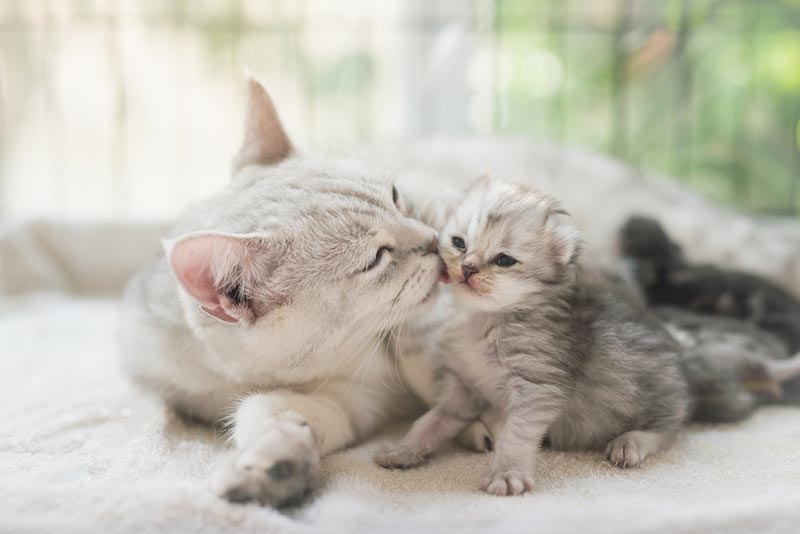
5. They like to “talk”
Kittens are very talkative. They can learn how to purr within a few days of being born. Purring is a kitten’s way of telling its mother that they are hungry. They are also known to hiss when they smell something unfamiliar. Kittens may be delicate and fragile, but they quickly learn how to communicate. They’ll eventually start purring for your attention in no time!
6. Kittens need to eat every 2–3 hours
Kittens develop very quickly, so they need massive amounts of sustenance to encourage their growth. Kittens need to nurse every 2–3 hours to get the necessary nutrients needed to facilitate their development.
For kittens, the weaning process starts at around 5 weeks old when they can begin both wet and dry food. Although they won’t need to eat every 2–3 hours a day, they still need enough sustenance as they are still rapidly growing. Kittens on a solid food diet would eat approximately four times a day.
7. Ear wiggles are a sign of healthy nursing
During nursing, you may notice your kitten’s ears wiggle. Seeing your kitten’s ear wiggle is a sign that they are nursing well. This is due to the muscular connection between a kitten’s head when successfully latching onto a nipple or a bottle. This could also be an indication that your kitty is happy to be eating!
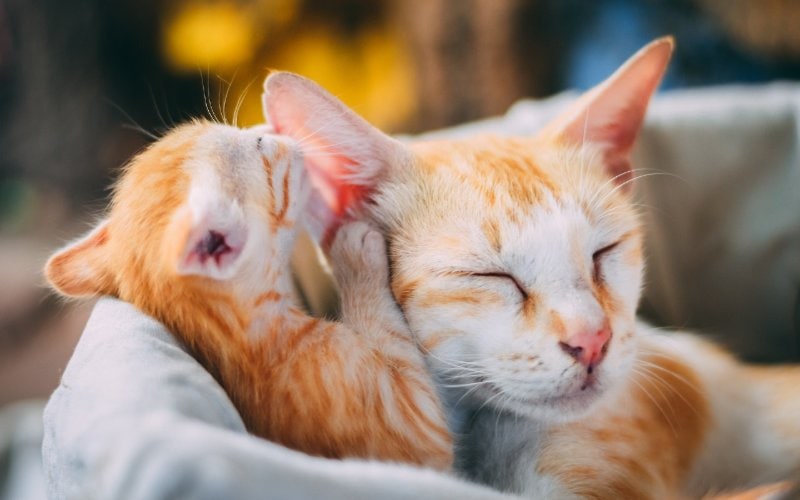
8. Kittens are born blind and deaf
During the first few weeks of life, kittens are born with their eyes and ear canals closed. Very young kittens lack the sense of sight and hearing, relying solely on instinct and their mothers for security and nutrition.
Kittens open their eyes after 2–3 weeks but don’t develop proper vision until 5 weeks old. Kittens’ ear canals open at around the 2nd week of life and are known to develop their adult-like hearing at around 4 weeks of age.
9. Kittens eventually develop heightened senses
Although they begin with no sight or hearing, they eventually develop superior senses compared to humans. Kittens may not see the same color spectrum as humans but have a better perception of movement and depth compared to humans allowing them to see in darker environments. They can also hear up to 65,000 Hz compared to the 20,000 Hz frequency range of humans.
For smell, kittens possess an extra organ to detect scent. This is called the vomeronasal organ, located at the roof of their mouths. Kittens’ heightened smell allows them to navigate the world when they have yet to develop sight and hearing.
10. Short-haired cats open their eyes sooner
Kittens typically begin to open their eyes at around 2–3 weeks of age. Although there has yet to be a peer-reviewed publication corroborating the following, many cat breeders claim that short-haired breeds open their eyes earlier at around 5–8 days after birth, compared to the 10–14 days of long-haired breeds.

11. Kittens start off with blue eyes
When kittens first open their eyes, you will notice that they are born with bluish-gray eyes. Some breeds, such as the Siamese and the Tonkinese, grow up to keep their blue eyes, but other breeds’ pigment changes when they reach adulthood.
12. A litter of kittens can have different fathers
If a female mates with multiple partners during the same heat cycle, a litter with multiple kittens can also have different dads. This is because each sperm cell fertilizes one egg cell, making it possible for kittens in the same litter to look different from one another.
Just like humans, kittens are also born with belly buttons. Each kitten, no matter how many siblings they have in the same litter, has an umbilical cord and amniotic sac each! This ensures that each of them gets the appropriate nutrients while they are in their mother’s womb.
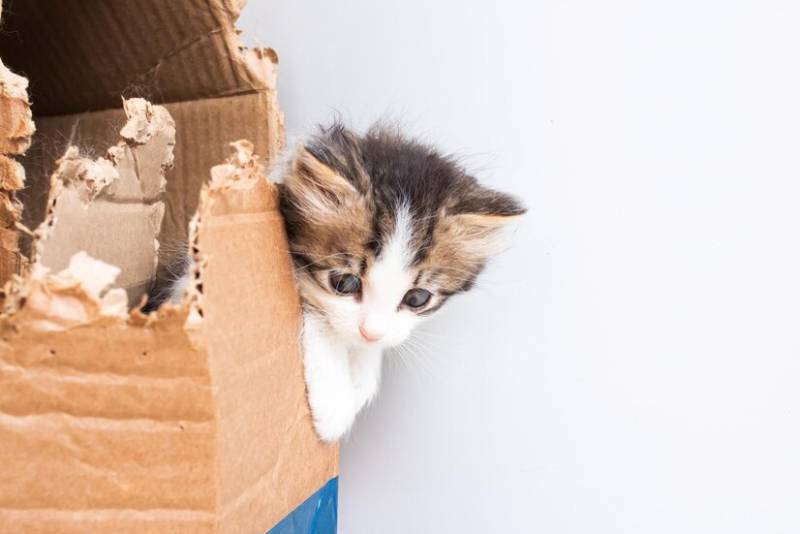
14. They are easy to train to go to the bathroom
Kittens learn how to potty train through instinct and by watching their mothers. Before they are 5 weeks old, their mother helps them urinate and defecate. When they are old enough, they simply learn where they need to go simply by following their mother. You can also train them by placing them in the litter box when it’s time to go, and they instinctively learn how to bury their waste.
15. Socialization is vital for learning
Just like potty training, social interaction is important for learning among kittens. Kittens learn how to interact with peers through their siblings and learn about the social hierarchy in the cat world through their mothers. They also learn how to interact with people. Don’t forget to let other people pet, feed, and handle your kitten, so they grow up comfortable around humans!
16. Kittens assert dominance among their siblings
Even as young kittens, there can be a little bit of power play among siblings. Kittens are known to chew each other’s whiskers to assert dominance over one another, further highlighting the impact of social interaction on a kitten’s development.
17. Kneading is important to kittens
You may have noticed your kitten, or even your adult cat, knead items and people. That is because, as kittens, kneading serves a very important purpose. Kittens knead to stimulate the flow of milk when nursing and eventually carry this behavior into adulthood.
The next time you see your cat knead, you are probably seen as their mother figure, and this is their way of seeking comfort.

18. Kittens’ whiskers are the same length as their body width!
One of the most adorable features that you will notice about your kitten is its whiskers. The length of their whiskers serves an important purpose. Kittens use their sense of smell along with their whiskers to explore the world. Kittens also use their whiskers when training their limbs to walk. Mother cats have been noted to sometimes chew off their kittens’ whiskers, with various proposed reasons, such as a means to keep them from wandering.
19. Kittens learn to walk at 3 weeks old
Compared to other juvenile animals, cats need a little more time to learn how to move around and explore their environment. Kittens normally learn how to stand at the 2nd week of life and eventually take their first wobbly steps at 3 weeks old. At 4 weeks, kittens typically master walking and are up and ready to play!
20. Early spaying or neutering is recommended
Even as kittens, cats become sexually mature as early as 5 months old. Kittens can go into heat and, yes, they can get pregnant!
Cats can get spayed or neutered as early as 8 weeks old can help prevent any behaviors associated with their heat cycle. If you’re not looking to breed your kittens, it is highly recommended that you have your kittens spayed or neutered.
Conclusion
Caring for a kitten with their funny habits, unique behaviors, and how they learn to explore the world is always a lot of fun. Whether you’re caring for a litter of kittens or a singular kitten, keep in mind that they don’t stay kittens for long. One day you’ll blink and realize that they’re all grown up, so remember to enjoy them as kittens while they’re still young!
Featured Image Credit: Albina-Tiplyashina, Shutterstock








